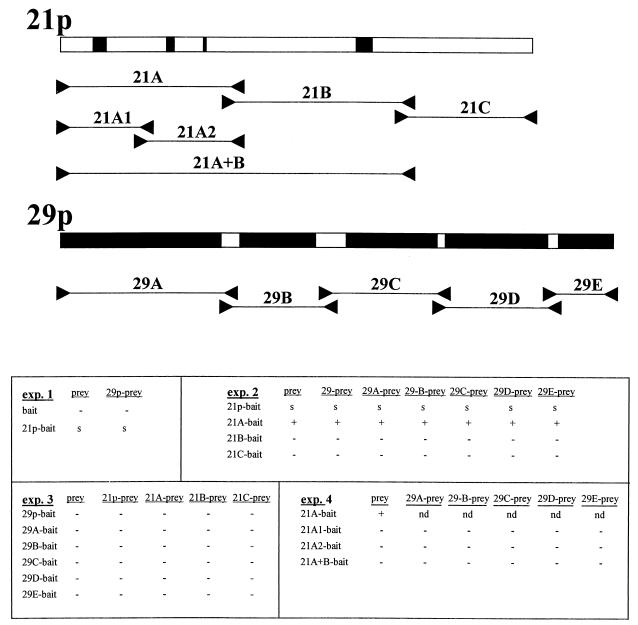FIG. 6.
Yeast two-hybrid analysis of 21p and 29p. Full-length ORFs 21p and 29p were inserted into pHybLex/Zeo (bait) or pYESTrp2 (prey) yeast expression plasmids. Oligonucleotide primers (between arrowheads) as listed in Table 1 were used to amplify regions within 21p and 29p, generating subclones of 21p and 29p for insertion into the bait and prey plasmids. The PCR primers were selected to be outside regions of homology between 21p and 29p and their analogous HSV-1 proteins (black boxes). The relative positions and nomenclatures for the subcloned fragments of 21p and 29p are listed below the respective proteins. The results of four independent yeast bait-prey transformation experiments (exp.) are shown. −, no growth on YC-WHUK+zeo plates and no β-Gal induction; +, growth on YC-WHUK+zeo plates and β-Gal induction; s, slow growth on YC-WHUK+zeo plates and slight β-Gal induction; nd, not done. The results indicate that full-length 21p contains slight intrinsic transcription activation capabilities, most likely located within the 21pA fragment of the protein. No 21p/29p interaction was demonstrated.

